06/06/22
A few years ago, I stumbled on the idea of Syllabus 2.0. The following is a crash course on First Principles thinking based on the Syllabus 2.0 methodology.
The idea is simple: to learn a new topic fast, one doesn’t need a Wikipedia but rather a well-curated course outline. Syllabus 2.0 is creating best in class learning guides crowdsourced from existing open materials available on the Internet. I fell in love with this idea instantly! So in 2018, I started creating my own Syllabus 2.0. For my own benefit, relevant for my context.
I did so with 3 simple steps:
Collating all materials from books, blogs, videos, podcasts, conversations, etc.
Categorising them by sections or chapters in order
Revisit them once in a while if I gather new knowledge
I started with First Principles. Moving on to Personal finance, Writing, Personal branding, MBA, Sci-fi drawing, Product design, Graphic design, Note-taking, Leadership, Hiring, etc. So far, I have done 30 such Syllabus 2.0.I’ll keep sharing those here over time.
First Principles
Break down complex problems into basic elements and create innovative solutions from there. Adopt to reasoning by first principles instead of reasoning by analogy.
01. First, watch these four videos
Example 1: Manufacturing batteries
"historically, it costs $600 per kilowatt-hour. And so it’s not going to be much better than that in the future. … So the first principles would be, … what are the material constituents of the batteries? What is the spot market value of the material constituents? … It’s got cobalt, nickel, aluminium, carbon, and some polymers for separation, and a steel can. So break that down on a material basis; if we bought that on a London Metal Exchange, what would each of these things cost? Oh, jeez, it’s … $80 per kilowatt-hour. So, clearly, you just need to think of clever ways to take those materials and combine them into the shape of a battery cell, and you can have batteries that are much, much cheaper than anyone realises."
Example 2: Economics (Watch 6.00 min onwards)
Example 3: Writing a book and more (Watch 3.00 mins onwards)
Example 4: Building rockets
02. Read this essay
Lots of real life examples provided. This also gives examples of assumptions we typically make on a day to day basis and how should we tackle them. https://fs.blog/first-principles/
03. Reasoning by analogy vs reasoning by first principles
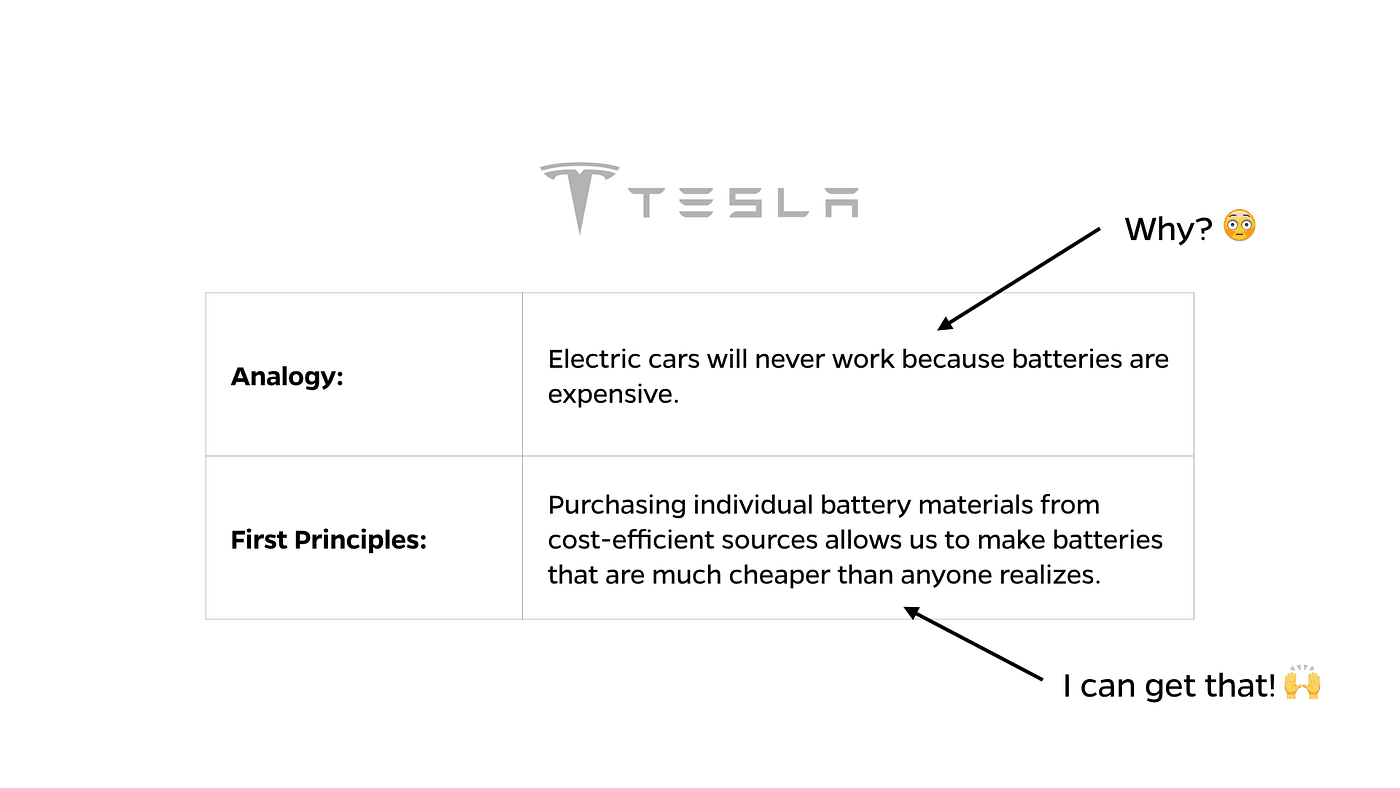
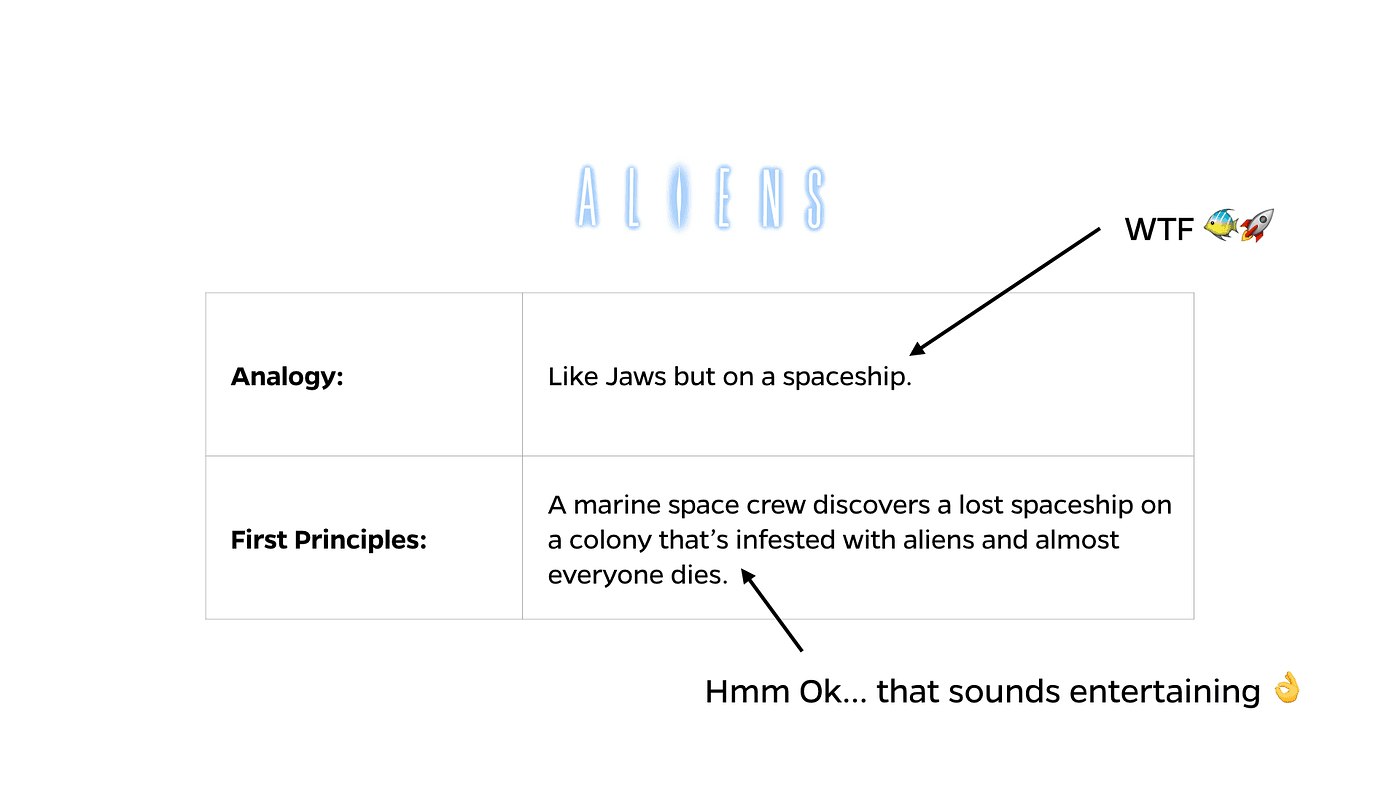
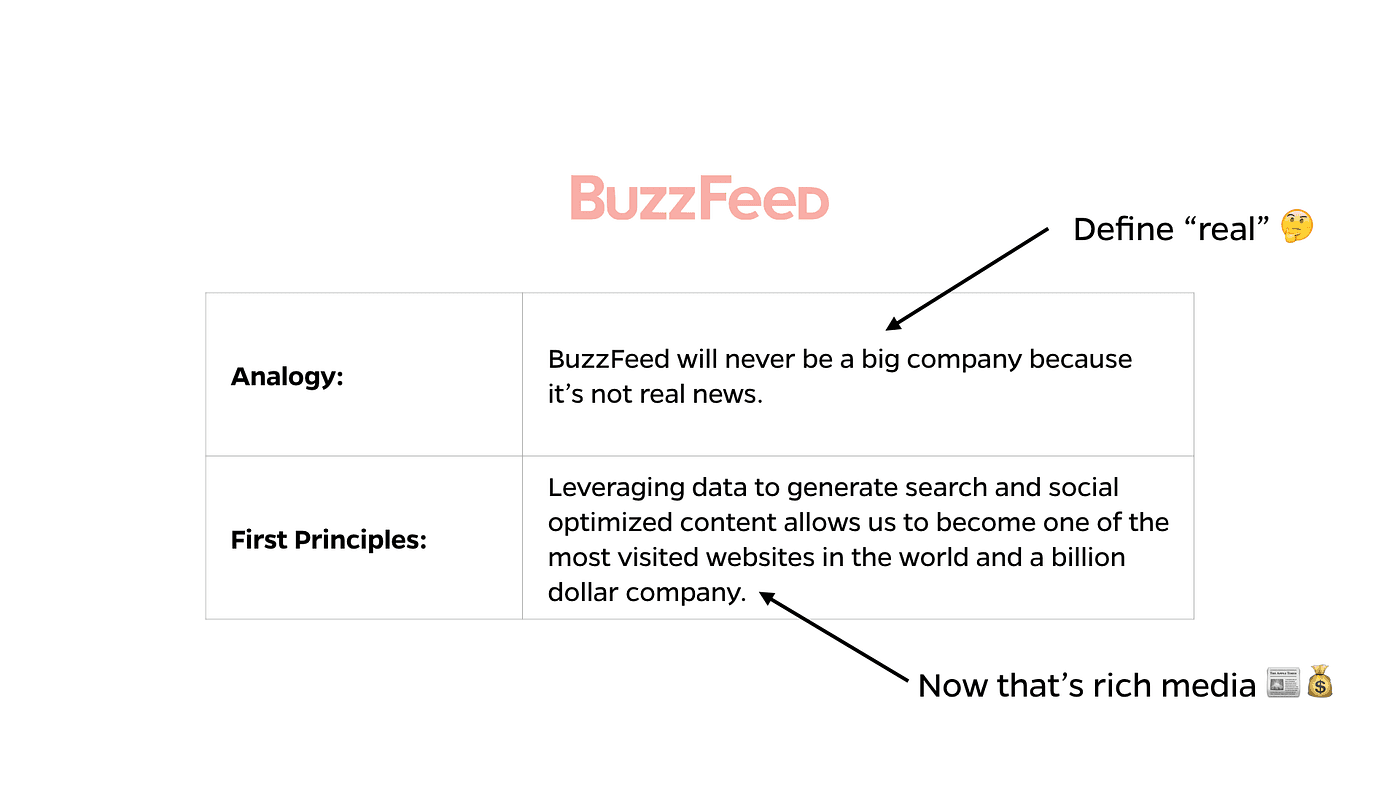
04. How to apply first principles?
Start with your problem and take these two steps:
Break it down to the most basic truths (first principles)
Re-build a solution from those principles
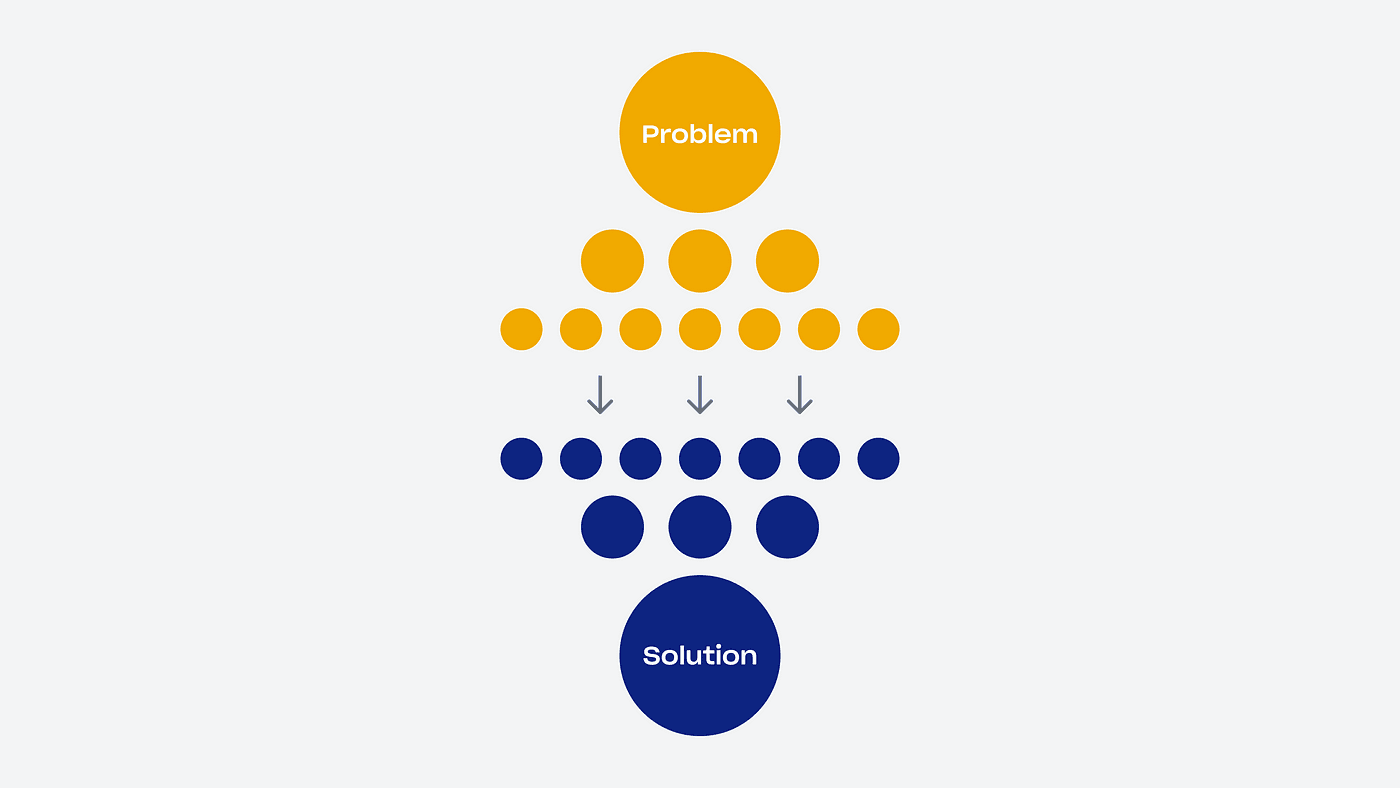
05. How to break it down?
The Five Whys
This is a popular technique in user research where a researcher digs deeper by repeatedly asking “why” questions. It enables you to discover the root causes of problems. Of course, you don’t have to stop at five, but it’s generally enough to discover a first principle.
Socratic questioning
A form of disciplined questioning that enables critical thinking. There are six types of questions you can ask to dig deeper for the fundamental truth:
Clarification — “What do you mean by…?”
Probing assumptions — “What could we assume instead?”
Probing reasons/evidence — “Why do you think this is true?”
Implications and consequences — “What effect would that have?”
Different viewpoints — “What would be an alternative?”
Questioning the original question — “What was the point of this question?”
Action steps with SpaceX as example:
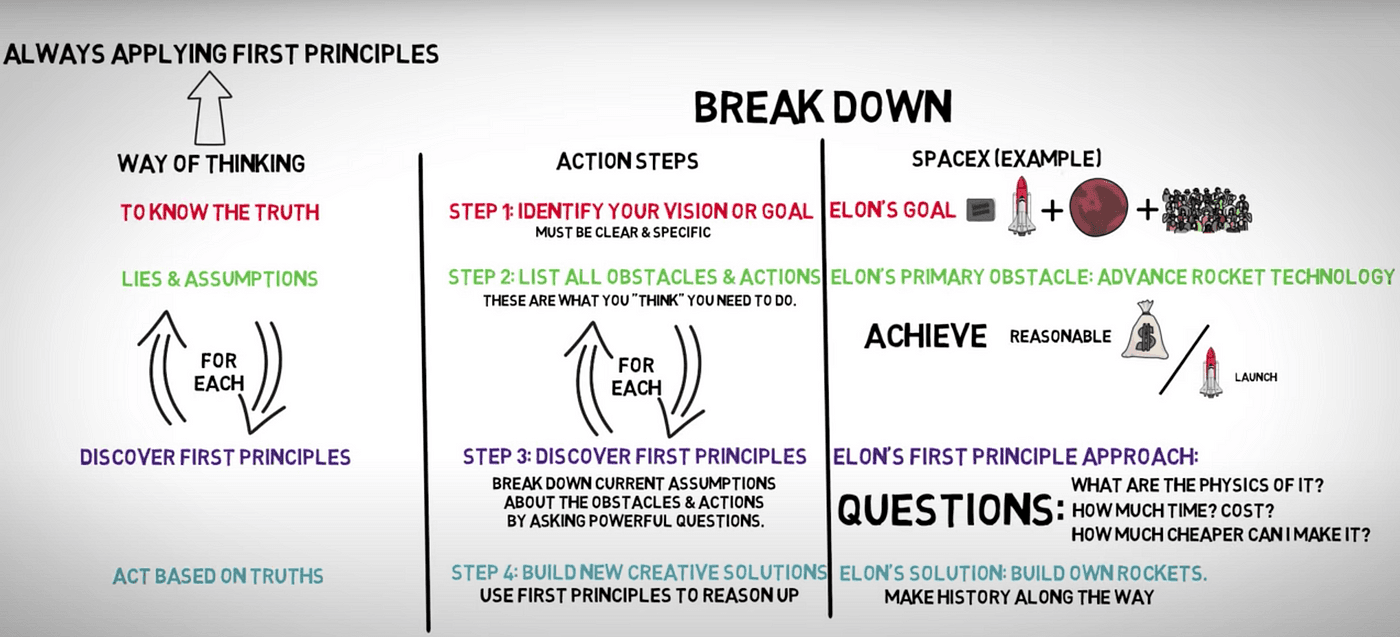
Product design example:
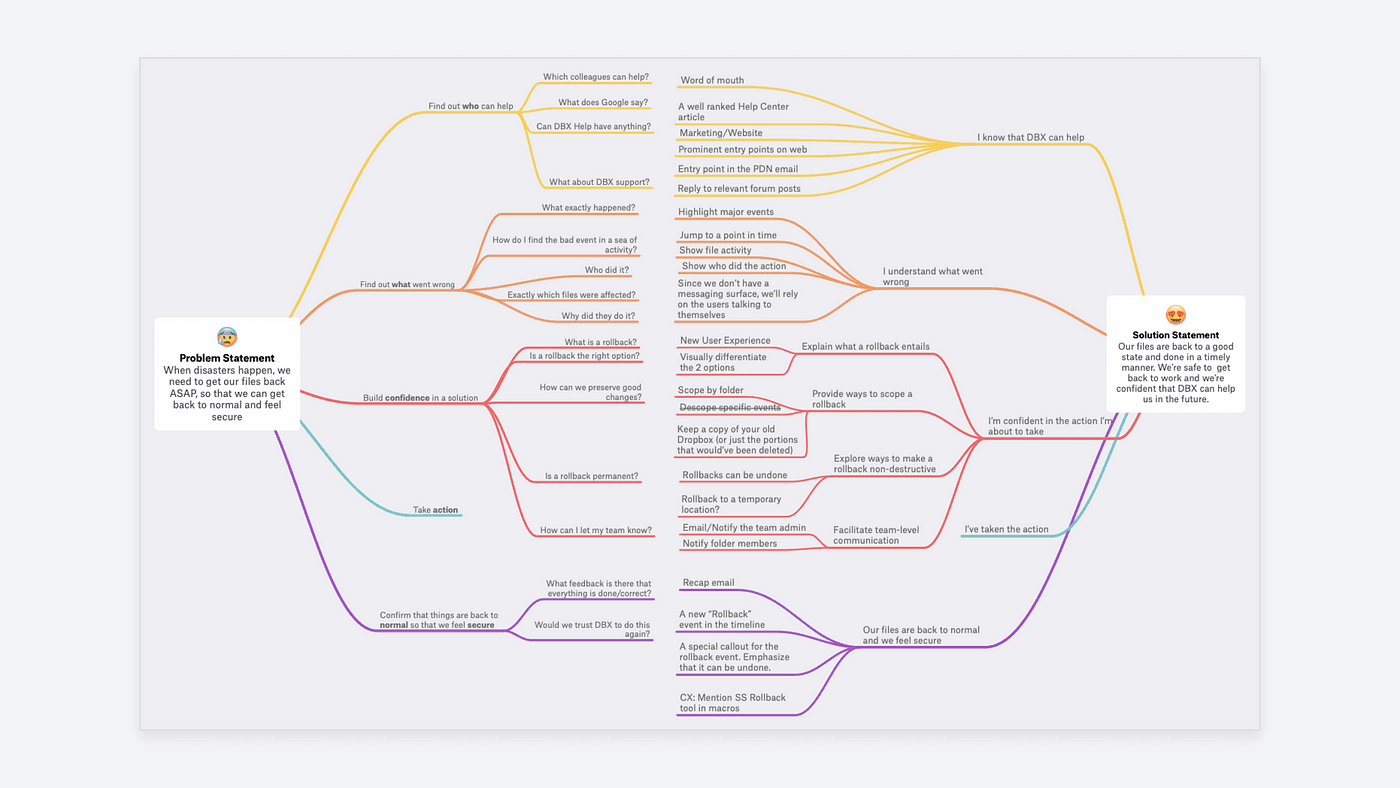
Sports example:
Consider boxing. That’s your system. What are the first principles? The rules of the game. That is different from culture — or what everyone thinks the rules to be. Someone used the principles and went against the culture to their advantage. Tim Ferriss on Chinese Kickboxing:
In 1999, I was a gold medalist at the Sanshou (Chinese kickboxing) national championships in the 165-lb. weight class . This is perhaps the most controversial accomplishment in the 4HWW, as I make it clear: I arrived the on-site at 187 lbs., weighed in at 165 lbs., and stepped on the platform to compete the next morning weighing 193 lbs.
It’s the de-facto culture now. Dehydrating your body to reduce your weight before weighing, and rehydrating before the bout.
Printing example:
Consider printing in the 15th century. Before Johaness Gutenberg invented the printing press, copying books was an expensive, time consuming process. The special monks in the church, called scribes, would copy each and every page by hand — complete with illustrations.
Hence, the books were limited. Only the richest lords and kings could read one. This was the culture — the reading is for the rich, with time on their hands. The working is for the common folk. All because books were expensive. Just 2 factions — you were either a lord or a peasant.
This changed with the printing press. Books could be mass produced now. Information could flow much more freely, at a cheaper price. The peasants who understood the rules had changed and embraced books — gave birth to the middle class. Those who didn’t, stayed in the lower class.
06. Bonus
Other posts in
Designers
09/01/25
10/12/24
01/12/24
18/10/24
12/10/24
09/10/24
04/10/24
19/07/24
